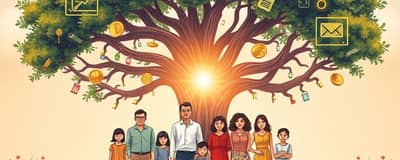Debt can feel like a heavy anchor, holding you back from dreams of security, travel, or even a peaceful night’s sleep. Yet every journey to financial calm begins with a single step toward clarity and action. In this guide, you’ll discover a compassionate, step-by-step plan to assess your situation, harness both proven methods and mindset shifts, and ultimately unlock the lightness of living without burdensome debt.
The Reality of Consumer Debt
Across the country, millions juggle multiple obligations—credit cards, student loans, car loans, and personal loans—each with its own balance, interest rate, and due date. When these obligations stack up, they can erode confidence, fuel anxiety, and force families to set aside dreams of homeownership or retirement.
- Credit cards
- Student loans
- Auto and personal loans
- Medical and household debts
Understanding the scope of your liabilities is the first step toward control, because what you can measure, you can manage. Recognizing that you are not alone in this struggle is also vital—debt is widespread, but so too are the solutions that have helped thousands regain their footing.
First Steps: Assess and Halt Further Debt
Before diving into repayment, make a firm commitment to stop incurring new debt. Close unused credit lines, avoid impulse purchases, and resist the allure of “buy now, pay later.” Armed with discipline, you can begin a clear, honest inventory of what you owe.
- List each debt: balance, interest rate, due date
- Calculate total monthly minimum payments
- Set a realistic budget and prioritize repayments
- Track every expense and adjust weekly
Core Debt Repayment Strategies
Choosing an approach that aligns with your personality and financial goals can make the difference between sticking to a plan and abandoning it in frustration. Below is a comparison of the most widely recognized methods:
Debt Snowball Method: Organize debts from smallest to largest balance. Pay minimums on all accounts except the smallest, directing any extra funds to eliminate that first debt quickly. The sense of progress can fuel momentum, boosting confidence and motivation at each milestone.
Debt Avalanche Method: Prioritize debts by highest to lowest interest. By targeting the costliest balances first, you minimize total interest paid, saving significant money over time. While early wins may come more slowly, the long-term rewards are substantial.
Debt Consolidation: Roll multiple obligations into a single personal loan or home equity line of credit. This strategy streamlines payments and costs by bringing debts under one rate. It can ease monthly budgeting, though fees and extended timelines should be weighed carefully.
Debt Management Plan (DMP): Available through nonprofit credit counseling agencies, DMPs allow for one consolidated payment with potential reductions in interest or fees. With a success rate of about 68%, these plans can span up to five years but offer structured relief for those overwhelmed by unsecured debts.
Complementary Tactics and Professional Help
Beyond core strategies, consider reaching out directly to creditors to negotiate lower interest rates or request hardship plans. For more complex cases, debt settlement companies may bargain down principal amounts—though fees of 15–20% and credit impacts pose risks. Nonprofit credit counseling can also provide personalized budgeting advice and advocate on your behalf.
Behavioral and Emotional Perspectives
Financial success is as much about mindset as arithmetic. The snowball method thrives on excitement and small victories, while the avalanche appeals to those who focus on long-term optimization. Reflect on what sustains your motivation: do you need frequent encouragement, or are you driven by clear projections of savings? Acknowledging your style can help you stay committed when challenges arise.
Building an Emergency Fund and Protecting Progress
Nothing derails a debt plan faster than an unexpected bill. Aim to accumulate a starter cushion—three to six months of living expenses—while still making minimum payments. Even a modest buffer of $500 can prevent reliance on credit cards the next time a car repair or medical cost appears.
Your Roadmap: Implementing and Staying on Track
- Stop new borrowing immediately
- Catalog all debts with key details
- Create and follow a realistic budget
- Select your ideal repayment strategy
- Review progress monthly and adjust
- Celebrate milestones to maintain momentum
Celebrating Milestones and Looking Forward
When you pay off that first credit card or student loan installment, take a moment to recognize your achievement. These victories, however small, are evidence of progress and resilience. By celebrating every small victory, you reinforce positive habits and build confidence to tackle larger balances.
As you cross each finish line—debt-free car, mortgage-ready savings, fully funded emergency account—the horizon of possibilities expands. You reclaim not just financial flexibility but the freedom to pursue dreams that once felt out of reach.
Your journey to financial freedom is personal, but you don’t have to travel it alone. Armed with knowledge, a supportive plan, and unwavering commitment, you can transform debt from a source of stress into a conquered challenge—and open the door to a future defined by choice, peace, and empowerment.














